Exploring Ooho Water: A Sustainable Innovation in Hydration
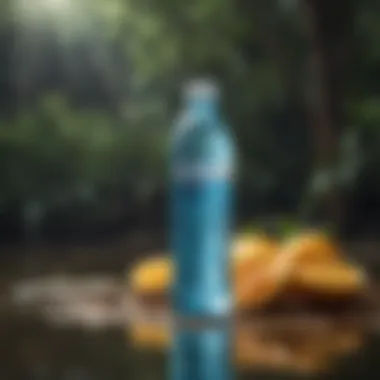
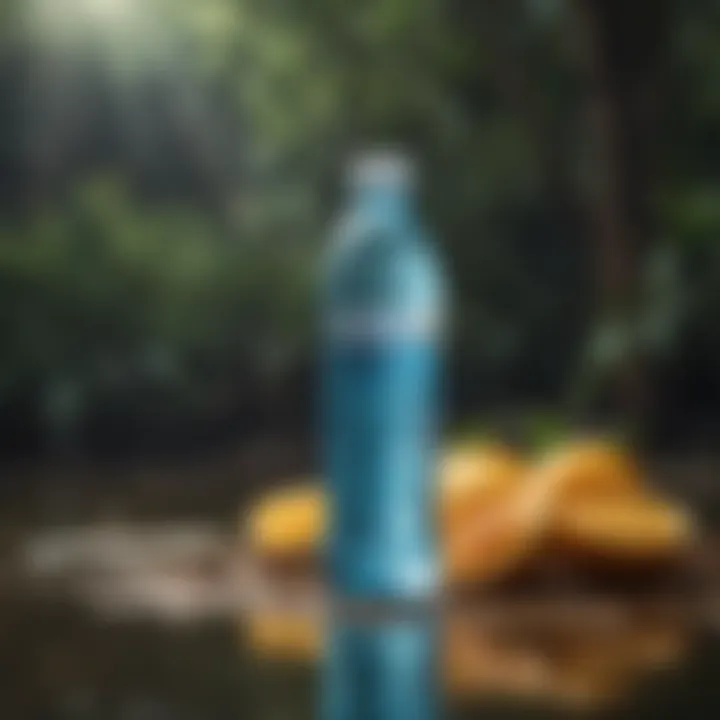
Intro
In a world that is becoming increasingly aware of environmental challenges, innovation in hydration is taking new shapes. One particularly interesting concept that has emerged is Ooho water. This product stands out, not only for its unique packaging, but also for the implications it holds for sustainable living. This edible water bubble encapsulates a solution that diverges from the traditional bottled water model, which often does more harm than good in terms of environmental sustainability.
As water sports enthusiasts and outdoor adventurers look for ways to stay hydrated without contributing to plastic waste, exploring Ooho offers a compelling alternative. The following sections will integrate key insights into the production of this innovative product, examine its ecological footprint compared to conventional bottled water, and discuss how the watersports community can adopt it for better sustainability.
Preface to Ooho Water
The emergence of Ooho water marks a turning point in the landscape of hydration. In an age where climate consciousness drives decision-making, this innovative product transcends traditional bottled water, positioning itself as a beacon of sustainability. The average consumer may not immediately recognize the environmental impacts of every bottled product consumed, yet the cumulative harm caused by plastic waste is staggering. A shift towards alternatives like Ooho can potentially drive significant change within the beverage market, particularly for those who engage actively in outdoor activities and watersports.
Also, it isn't just about quenching thirst; it�’s about redefining how we perceive and interact with our environment. At its core, Ooho water embodies a concept that not only satisfies our hydration needs but also aligns with our ethical responsibility towards the planet. The question then becomes: how can we rethink our water consumption to embrace more sustainable practices?
The Concept of Edible Packaging
Imagine holding a drink that is not just something you consume, but also something you can eat afterward. This is the heartbeat of Ooho water, which features edible packaging. Made primarily from natural seaweed extract, this innovative approach to packaging eliminates the need for single-use plastics. It isn't simply a novel gimmick; it addresses pressing concerns in our ecological landscape.
The concept extends beyond hydration; it challenges the traditional norms that have long dictated consumer behavior. By reshaping what we use to contain our drinks, Ooho embodies a fundamental shift in our relationship with consumption.
- Natural Ingredients: Ooho's ingredients reflect a commitment to sustainability, being bio-degradable and environmentally friendly. This choice aligns seamlessly with the growing trend of conscious consumerism, especially among those participating in outdoor events.
- Reduction in Waste: By consuming the packaging along with the liquid, users contribute directly to a decrease in plastic waste, which is a game changer on a global scale. Enhancing the user experience without compromising environmental integrity sets Ooho apart in the market.
Overall, the simple yet profound act of consuming water in edible packaging propels the idea of sustainability to new heights. This product not only satisfies hydration needs but also invites users to consider the environmental repercussions of their choices.
"Embracing edible packaging is more than just a trend; it’s a necessary step toward preserving our planet while enjoying the natural resources it provides."
For water sports enthusiasts and adventurers, the necessity for hydration cannot be overstated, yet so often, our practices clash with our ideals. The idea of Ooho water pushes the boundaries of what we consider feasible and acceptable in terms of consumption habits.
Environmental Concerns with Bottled Water
The topic of environmental concerns surrounding bottled water is pivotal to understanding the broader implications of our hydration choices. Each year, billions of plastic bottles are produced worldwide, leading to serious ecological problems. These issues affect not just our immediate surroundings, but also distant ecosystems that bear the brunt of our consumption habits. The rise of reusable and innovative solutions like Ooho aims to change these patterns, but first, it’s essential to grasp the weight of these environmental concerns.
Plastic Pollution in Waterways
Plastic pollution in waterways is a haunting reality that manifests in several alarming forms. Rivers, lakes, and oceans become dumping grounds for plastic debris, with single-use bottles being among the most common offenders. According to estimates, over 300 million tons of plastic are produced each year, and a significant portion of that ends up in aquatic systems.
This pollution is not just an eyesore; it can devastate marine life. Fish, birds, and other animals can mistake plastic for food, leading to dire consequences. Moreover, microplastics, which are tiny plastic fragments, have infiltrated food chains and eventually made their way to human consumers. This cycle not only poses a threat to wildlife but raises questions about human health and safety.
In an age where sensational headlines about ocean pollution flood news feeds, it’s easy to overlook what’s at stake. Here’s a sobering thought: the Ocean Conservancy reports that 1 million marine creatures die each year due to plastic pollution. Recognizing these facts is the first step toward supporting sustainable alternatives like Ooho water.
"If we don’t change our habits, we’re essentially sticking our heads in the sand while oceans fill up with plastic."
Carbon Footprint of Bottled Water
Examining the carbon footprint of bottled water unveils another layer of environmental concern. The production, transportation, and disposal of plastic bottles contribute significantly to greenhouse gas emissions. From the industrial energy used to manufacture the bottles to the fuel burned during transportation, the environmental toll adds up quickly.
Bottled water can leave a carbon footprint up to three times greater than tap water. It’s not just about how we drink but also how those beverages get to us. Unsurprisingly, bottled water often travels thousands of miles before reaching the consumer. The logistics involved in this process—transporting heavy bottles across state lines, and even countries—contrast sharply with the more sustainable practices of local hydration solutions.
Consider these points:
- Transport & Delivery: Each step in the supply chain adds to the total emissions, contributing to climate change.
- Manufacturing Energy: The energy required to produce lightweight, single-use bottles is far from negligible.
- Waste Disposal: Plastic bottles often end up in landfills, where they can take hundreds of years to decompose, releasing greenhouse gases in the process.
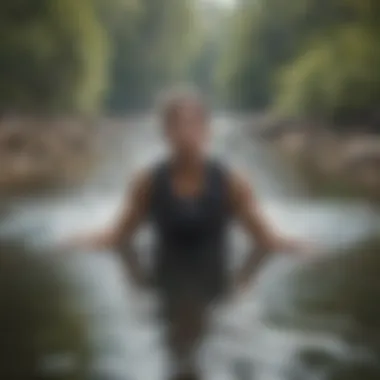
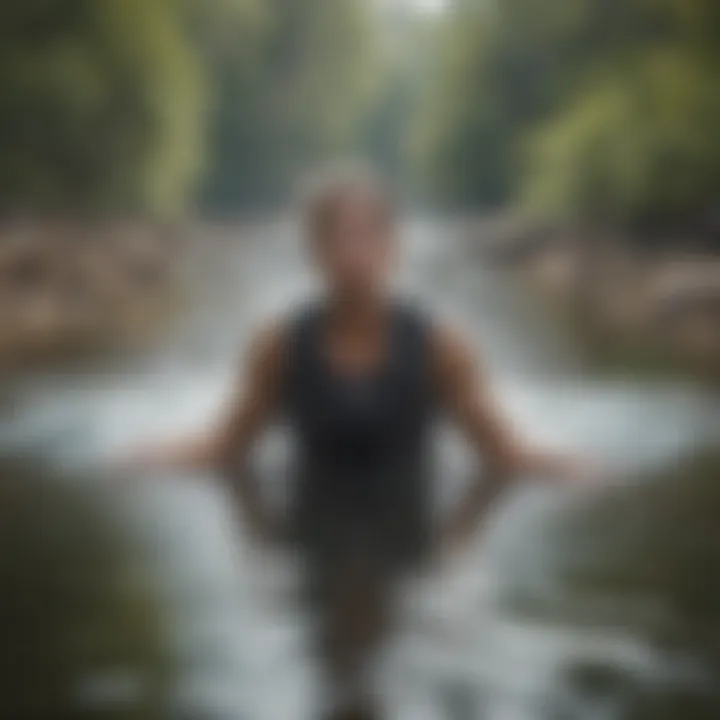
An alternative like Ooho seeks to disrupt this cycle, aiming to provide hydration without the overwhelming environmental damage caused by conventional bottled water. Understanding these carbon implications urges consumers to consider more sustainable options for their hydration needs.
Understanding the Ooho Technology
When discussing Ooho water, it's crucial to grasp the underlying technology that facilitates this innovative form of hydration. This understanding not only highlights the practicality of the product but also addresses its environmental implications. With the world increasingly shifting towards sustainable solutions, Ooho provides a fresh perspective on how we engage with our hydration needs.
Materials Used in Ooho Production
At the core of Ooho water's appeal lies its materials. The creation of this edible packaging primarily involves sodium alginate, a natural polysaccharide derived from brown algae. Alginates are known for their ability to form gels when they come into contact with calcium ions. This interaction is what gives Ooho its unique shape and environmental benefits. Other components may include water and calcium chloride, essential for the spherification process.
Interestingly, these materials are not just chosen for their functionality. They embody a commitment to sustainability; they are biodegradable and do not contribute to pollution. By opting for ingredients sourced from nature, Ooho avoids many of the environmental challenges associated with traditional plastic packaging.
The Production Process
The method of producing Ooho water is both innovative and relatively straightforward. The process begins with mixing sodium alginate with water to create a gel-like substance. This is followed by the incorporation of calcium chloride, which initiates the gelation process. Once mixed, the solution is dropped into a calcium bath, where it forms into spheres, creating the final edible packaging.
- Preparation: It all starts with getting the right proportions of sodium alginate and calcium chloride. Being precise is key here to ensure the correct texture and integrity of the Oohos.
- Spherification: The next step involves carefully dropping the alginate solution into a calcium solution. This is where the magic happens; the spheres start to form almost instantly. They need to be monitored closely to ensure they achieve the right thickness and consistency.
- Rinsing and Packaging: After forming the spheres, they are rinsed in water to remove any excess calcium. Once done, they’re packed in a way that maintains their freshness, allowing consumers to enjoy their hydration without any need for conventional plastic.
Understanding the Ooho production process reveals more than just its technicalities. It unveils a broader narrative on how innovation in technology can lead to sustainable practices. As we delve deeper into this topic, it becomes increasingly clear: Ooho water isn't merely a different way to package hydration; it stands as a symbol of a shift towards environmental responsibility in the realm of consumables.
"The innovation of Ooho water illustrates how technology and sustainability can walk hand in hand, paving the way for a future where consumption does not equate to waste."
With the awareness of materials and production methods, it's easier to appreciate the potential of Ooho as a feasible alternative for lovers of outdoor activities, watersports, and health-conscious consumers alike. The focus on natural ingredients and eco-friendly processes resonates particularly well within these communities.
Potential Benefits of Using Ooho
The exploration of Ooho water doesn't merely end at its innovative packaging. Understanding the benefits it brings to the table is equally crucial, especially when we consider the challenges surrounding traditional bottled water. This section dives into two fundamental advantages of Ooho: its contribution to reducing plastic waste and the natural ingredients that underline its health benefits.
Reduction in Plastic Waste
One of the most pressing environmental issues today is plastic pollution. Traditional bottled water contributes significantly to this crisis. With billions of plastic bottles ending up in landfills and oceans every year, it’s no surprise that consumers are seeking alternatives.
Ooho aims to combat this problem head-on. By utilizing biodegradable materials, it eliminates the need for plastic entirely. The outer layer of Ooho is made from algae, making it compostable. This innovation not only reduces the overall plastic waste but also promotes a circular economy.
"Every year, over 1 million plastic bottles are purchased every minute. Ooho provides a sustainable alternative that helps decrease that number dramatically."
In practical terms, this means for every Ooho product consumed, there is one less plastic bottle contributing to our environmental woes. For outdoor adventurers, skiers, and athletes, switching to a package that you can eat or compost after consumption aligns perfectly with their sustainability values. Moreover, supporting innovations like Ooho sends a clear message to larger corporations about the demand for eco-friendly practices.
Natural Ingredients and Health Benefits
Beyond its environmental impact, the composition of Ooho also appeals to health-conscious consumers. The ingredients used in Ooho are simple and natural, offering a purer hydration experience. Unlike bottling processes that can infuse water with certain contaminants or require additives, Ooho retains the natural essence of water.
Here are specific points regarding the natural ingredients and potential health advantages:
- Algal Source: The outer membrane is derived from algae, a natural resource that is known for being both sustainable and nutritious. Some studies suggest that marine algae can provide beneficial nutrients that can enhance physical performance.
- Enhanced Hydration: The method of encapsulation can retain more minerals from the water, providing electrolytes that are crucial for hydration. This feature could be particularly beneficial during high-intensity sports where hydration is vital.
- Avoiding Additives and Preservatives: With Ooho, consumers can enjoy a product devoid of chemical additives often found in traditional bottled waters. This transparency appeals to those with dietary restrictions and preferences towards organic living.
Market Acceptance of Ooho Water
Understanding the concept of market acceptance is crucial for the success of any innovative product, and Ooho water is no exception. In a fast-paced world where consumers are becoming increasingly aware of their choices, the way a product is perceived can make or break its success. The introduction of Ooho water signifies a shift in consumer preferences toward more sustainable options in hydration solutions. As such, it's essential to dig deeper into the reactions of consumers and the challenges that may obstruct its widespread acceptance.
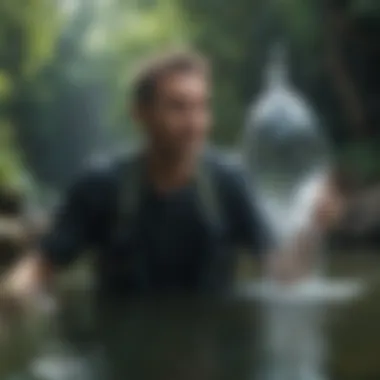
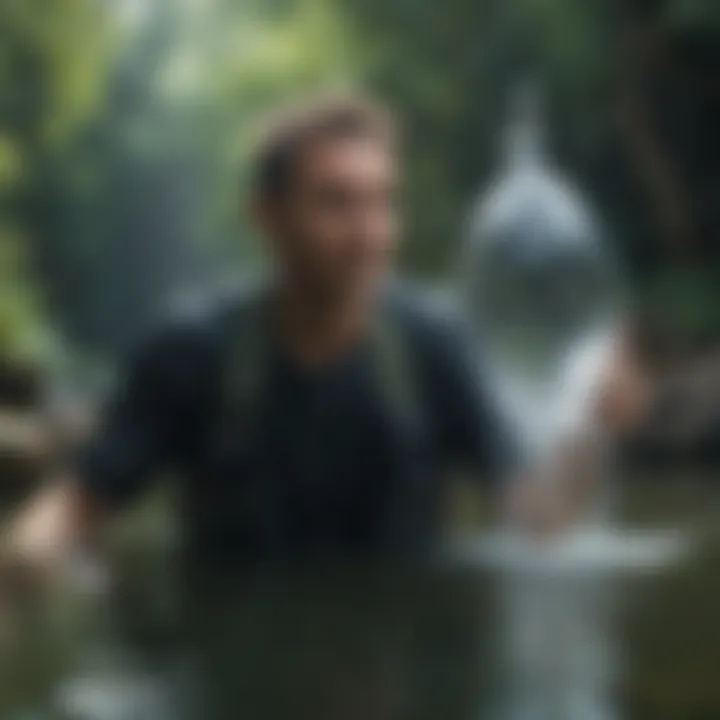
Consumer Reactions and Feedback
When it comes to consumer reactions to Ooho water, feedback has been vastly varied. On one hand, there are enthusiasts who laud its eco-friendliness and innovation. Many consumers have scooped up the chance to try something that aligns with their values of sustainability. There are positive sentiments toward the unique packaging; the idea of consuming the outer layer instead of discarding it resonates well with environmentally conscious individuals. Comments online point to experiences where users felt good, not just about hydrating, but also knowing they were reducing plastic waste.
- "Finally, a drink that doesn’t leave trash behind!"
- "I feel like I’m making a difference just by drinking water now."
On the flip side, there are also concerns regarding the practicality and taste. Some users find the idea of edible packaging strange or uncomfortable. Questions arise about shelf life, handling, and texture. The question of whether the product can effectively replace traditional bottled water remains a point of contention among skeptics.
"Consumer perception plays a significant role in whether a product can gain traction, especially in the environmentally-conscious market of today."
Challenges in Market Penetration
Despite its potential, the road to market penetration for Ooho water is laden with challenges. First and foremost could be the consumer educational gap. Some segments of the market are simply unaware of the product, while others have misconceptions about its functionality and safety. Bridging this gap will require robust marketing strategies and educational campaigns.
Additionally, existing regulations surrounding food and beverage products may pose hurdles. For instance, packaging contemplations, safety standards, and even labeling laws can slow down the process of getting Ooho water onto store shelves.
Then there's the issue of competition. The bottled water industry is well-established and dominated by familiar brands. Gaining a foothold amidst traditional market players can be like swimming upstream without a paddle.
Moreover, distribution channels also become a significant concern. Whether it's slow-moving supply chains or reluctance from retailers to stock what's seen as an unconventional item, these challenges can hinder availability.
Successfully navigating these obstacles will ultimately determine the market acceptance of Ooho and its trajectory as a sustainable alternative in hydration.
Comparative Analysis: Ooho vs Traditional Bottled Water
When it comes to choosing between Ooho and traditional bottled water, weighing the pros and cons is essential for informed decision-making. In this section, we will explore the nuances that set these two hydration methods apart. The underlying purpose is to provide a clear understanding of how Ooho contributes to sustainability while addressing practical concerns consumers may face. By analyzing cost considerations and convenience, we can evaluate the overall value offered by this innovative approach to hydration.
Cost Considerations
Cost is often a sticking point for many water consumers. Traditional bottled water might seem like a convenient choice, often available at low prices in supermarkets and convenience stores. However, this convenience often comes at a high environmental cost, something that isn't always factored into the price tag. It might be that the price of bottled water closely mirrors the artificial packaging expense, transporting costs, and, of course, the effort to recycle those plastic bottles afterward.
In contrast, Ooho aims to eliminate many of these costs through its edible packaging. With Ooho, production involves simpler, biodegradable materials, potentially reducing the manufacturing overhead. Yet, the question arises: is Ooho financially accessible compared to bottled water? Some research indicates that the pricing can fluctuate based on production scale and consumer adoption rates.
"Will the cost benefits of Ooho become clearer as the technology matures? The market's progress can determine if Ooho becomes a mainstream choice for hydration."
- Short-term costs for new products tend to be steeper, but as economies of scale kick in, consumer prices may fluctuate.
- Evaluating deals that local businesses might offer where Ooho is sold can also shed light on its affordability.
Convenience and Availability
Convenience plays a significant role in consumer choices when it comes to hydration. Traditional bottled water has long enjoyed a reputation for ease. Whether you’re at the beach, on a hiking trip, or simply need a drink while driving, a bottle is often just a quick trip to the shop away. Its ready-to-go nature makes it hard to resist.
Nevertheless, as consumers become increasingly eco-conscious, the charm of plastic bottles starts to wear off. In contrast, Ooho requires a shift in mindset. The edible packaging is not only unique but also asks users to rethink how they engage with hydration on-the-go. While Ooho’s novelty could be a deciding factor for some, the true challenge lies in its availability.
- Many mainstream retailers have yet to adopt this technology, leaving consumers searching for specialized outlets or pop-up events to get their hands on it.
- Outdoor event organizers are beginning to recognize the environmental benefits and adapt. It’s becoming more common to find Ooho being offered at music festivals, marathons, and other water sport events to serve those who value sustainability.
In the end, while traditional bottled water may offer immediate satisfaction, Ooho demands a thoughtful exchange between convenience and ecological responsibility. If the infrastructure can evolve to increase accessibility, Ooho could become a formidable contender in the hydration arena.
Ooho Water in the Context of Watersports
Watersports demand not only a rush of adrenaline but also a reliable source of hydration. The physical exertion that comes with activities like kayaking, sailing, and surfing requires athletes to stay hydrated to maintain their performance. This is where Ooho water enters the picture, offering a sustainable and innovative solution unlike traditional bottled water.


Hydration Needs for Athletes
Athletes involved in watersports face unique hydration challenges. The fusion of sun exposure, rigorous exertion, and sometimes high temperatures makes it essential to replace lost fluids efficiently. Dehydration can lead to decreased concentration, stamina, and even performance failures, which are particularly concerning in highly competitive environments.
Ooho water addresses these hydration needs remarkably well. Since it's packaged in a biodegradable, edible sphere, it eliminates the hassle of carrying bulky bottles or dealing with crushed containers littering the environment. Athletes can hydrate anywhere they go, whether on a beach, at a river’s edge, or mid-challenge.
"Staying hydrated has never felt this seamlessly integrated into my routine! It’s like having nature’s essence right at my fingertips."
Moreover, the Ooho technology uses natural ingredients, allowing athletes to hydrate without consuming artificial additives. This is particularly appealing to those who are increasingly mindful about their health and nutrition, further enhancing the appeal of Ooho water in this domain.
Sustainability in Watersport Events
The water sports community stands at a crossroads concerning sustainability. With events often leading to significant plastic pollution, finding eco-friendly alternatives is not just desirable but essential. Utilizing Ooho water can set a precedent for future events, demonstrating how environmental consciousness can be woven into the fabric of competitive activities.
- Reduction of Plastic Waste:
- Education and Awareness Raising:
- Enhanced Athlete Brand Image:
- Each event could minimize its carbon footprint substantially by replacing single-use plastic bottles with Ooho waters.
- Organizers can promote a cleaner environment, raising awareness while setting an example.
- Incorporating Ooho into events presents a prime opportunity to educate participants and spectators about sustainable practices.
- Engaging conversations around hydrating responsibly can ripple out beyond the sports world, influencing broader community behavior regarding hydration and waste.
- Athletes who support sustainability can enhance their personal and professional brands by aligning with innovative solutions like Ooho.
- Endorsing eco-friendly practices resonates well with environmentally conscious fans, generating goodwill and a positive image.
In summary, the integration of Ooho water into the watersport landscape reflects a significant step toward sustainable hydration. The notion that athletes can hydrate smartly while promoting environmental care shows how small shifts can lead to broader, impactful changes.
Future Prospects of Ooho Water
As the global community becomes increasingly aware of the environmental impacts of traditional bottled water, innovative solutions like Ooho water beckon a closer examination. The prospects of this edible packaging technology are significant, as it not only addresses pressing issues related to plastic waste but also presents new avenues for marketing and consumption. Understanding the future of Ooho water is essential for various stakeholders, including consumers, investors, and environmental advocates. This section explores key innovations and the pathway to potential global adoption, shedding light on its relevance in promoting sustainable practices in hydration.
Innovations on the Horizon
The journey of Ooho water does not stop at being an alternative to bottled products. Instead, several innovations are on the horizon that could further enhance its appeal and functionality.
- Expanded Flavors and Nutritional Additives: Manufacturers are exploring the incorporation of various flavors and even nutrients into the Ooho spheres. Imagine getting your daily vitamins in a sip while enjoying a burst of fruity goodness, all in a biodegradable package.
- Improved Shelf Life: Researchers are developing methods to extend the shelf life of Ooho without sacrificing its taste or safety. Smarter preservation techniques could make it a more practical choice for outdoor adventures, ensuring hydration remains within reach even after prolonged storage.
- Enhanced Accessibility: Recent discussions in the industry focus on making Ooho packaging more accessible. This could involve partnering with traditional retailers or sporting events to ensure that anyone in need of hydration can opt for this sustainable alternative.
- Customization Through Technology: New tech could allow users to customize their hydration experience. Imagine a mobile application where you can select flavor profiles or functional ingredients that suit your workout needs.
"Innovation does not stop with invention; it lies in continuous improvement to meet the needs of society."
The ramifications of these innovations could open doors for Ooho water to become a staple, not just among eco-conscious consumers but for everyone prioritizing health and convenience.
Potential for Global Adoption
For Ooho to achieve its true potential, global adoption is crucial. This would not only help reduce plastic waste but also reshape consumer attitudes towards hydration and packaging. Several factors lend themselves to the feasibility of widespread implementation.
- Growing Environmental Awareness: As climate change discussions become more prevalent, many consumers are actively seeking eco-friendly alternatives. Ooho water serves as a formidable option in this landscape, appealing to eco-conscious individuals who wish to minimize their carbon footprint.
- Regulatory Support: Governments worldwide are pushing initiatives aimed at reducing plastic usage. Supportive legislation could pave the way for Ooho's wider use in public events and festivals, catalyzing consumer embrace on a larger scale.
- Sustainability Goals by Corporations: Major corporations are increasingly prioritizing sustainability in their branding and product offerings. Collaborations with established brands could elevate Ooho water’s visibility and credibility, pushing it into mainstream markets.
- Accessibility through Technology and Distribution: The rise of e-commerce and technological advancements can further seal the deal. As online platforms burgeon, integrating Ooho water into both subscription services and e-retail could facilitate its reach into homes around the world.
Ultimately, the intersection of evolving consumer preferences and supportive policies could position Ooho water as a leading player in the hydration market. By tapping into these trends, the potential for global adoption seems not just likely, but imminent.
Finale: The Path Forward for Sustainable Hydration
The conversation around hydration is evolving, and Ooho water stands at the forefront of this change. Its innovative approach not only addresses the environmental concerns raised by traditional bottled water but also introduces a new paradigm of what our hydration practices can look like in the future. As we reflect on the discussions throughout this article, it becomes clear that the shift towards sustainable hydration must be both intentional and widespread, encapsulating not just preferences, but also our collective responsibility towards the environment.
Embracing Change in Consumption Patterns
The acceptance of green alternatives like Ooho water isn’t merely a trendy phase; it's a necessary evolution in our consumption habits. The world is inundated with plastic waste, and more than ever, consumers are becoming conscious of their choices. The challenge lies not only in creating alternative products but also in fostering a cultural shift toward sustainability.
- Awareness: Many people underestimate the ripple effect of their choices. Opting for edible packaging could seem insignificant on an individual level, but collectively, these small decisions can lead to significant change.
- Education: Information is power, and educating consumers about the benefits of adopting sustainable hydration options is crucial. Awareness campaigns and discussions can help inform the public about the negative impacts of bottled water and the potential alternatives like Ooho.
- Accessibility: Ensuring that sustainable options are readily available is key. If Ooho water, for instance, can penetrate the market effectively, reaching convenience stores and sporting events, it can pave the way for widespread usage. Convenience and habit can indeed be huge factors in changing consumption patterns.
- Involvement: Product developers and environmentalists must collaborate to create innovative solutions that marry convenience with sustainability. The watersports community, for example, could fully embrace edible hydration solutions at events, leading to both awareness and practice.
In summary, the path forward for sustainable hydration necessitates a concerted effort by consumers, manufacturers, and educational entities alike. As we collectively adapt our consumption habits, each step towards embracing innovations like Ooho water will signify a move closer to a more sustainable future.















